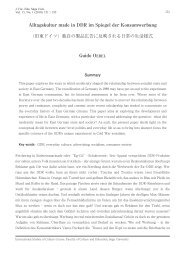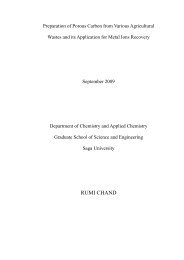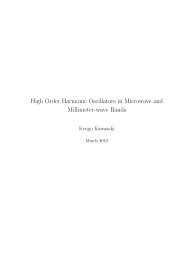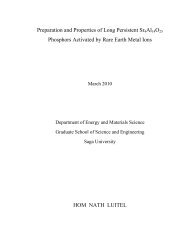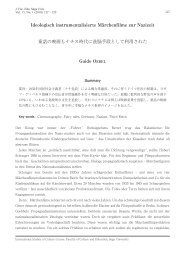ε (eV)
ε (eV)
ε (eV)
Create successful ePaper yourself
Turn your PDF publications into a flip-book with our unique Google optimized e-Paper software.
treatment time, temperature, and pressure (for the steam case).<br />
The devices using heat as an inactivation agent are the autoclave and the<br />
dry heat oven. The autoclave is using a high pressure steam circulating at a<br />
temperature of 121 ◦ C.Thetimerequiredforafulltreatmentcycleisvarying<br />
from 20 minutes for unwrapped instruments to 30 minutes for wrapped ones. On<br />
the other hand a more easy to sterilize sequence, when the composition of the<br />
materials allows, is given by the dry heat. This is usually circulated by convection<br />
through the oven chamber in order to touch all the surfaces of the instruments.<br />
The standard temperatures are varying from 160 ◦ Cto170 ◦ C. The treatment<br />
time is between 2 and 4 hours including the cooling time [31-34].<br />
The major disadvantages of the heat sterilization methods come from the high<br />
temperatures used for material processing or the high cooling periods needed after<br />
treatment. The advantages rely on the simplicity of the method and the lack of<br />
chemical contaminants [33, 34].<br />
1.2.2 Sterilization by electromagnetic radiation<br />
Photons from the ultraviolet (UV)-with wavelengths from 200 nm to 380 nm,<br />
and vacuum ultraviolet (VUV)-with wavelengths less than 200 nm have been in-<br />
tensively used as sterilization and disinfection agents in the past. It is believed<br />
that the most effective wavelengths interval of the light spectrum for microorgan-<br />
isms inactivation is between 220 nm and 285 nm [25, 35, 36]. At these wavelengths<br />
7



